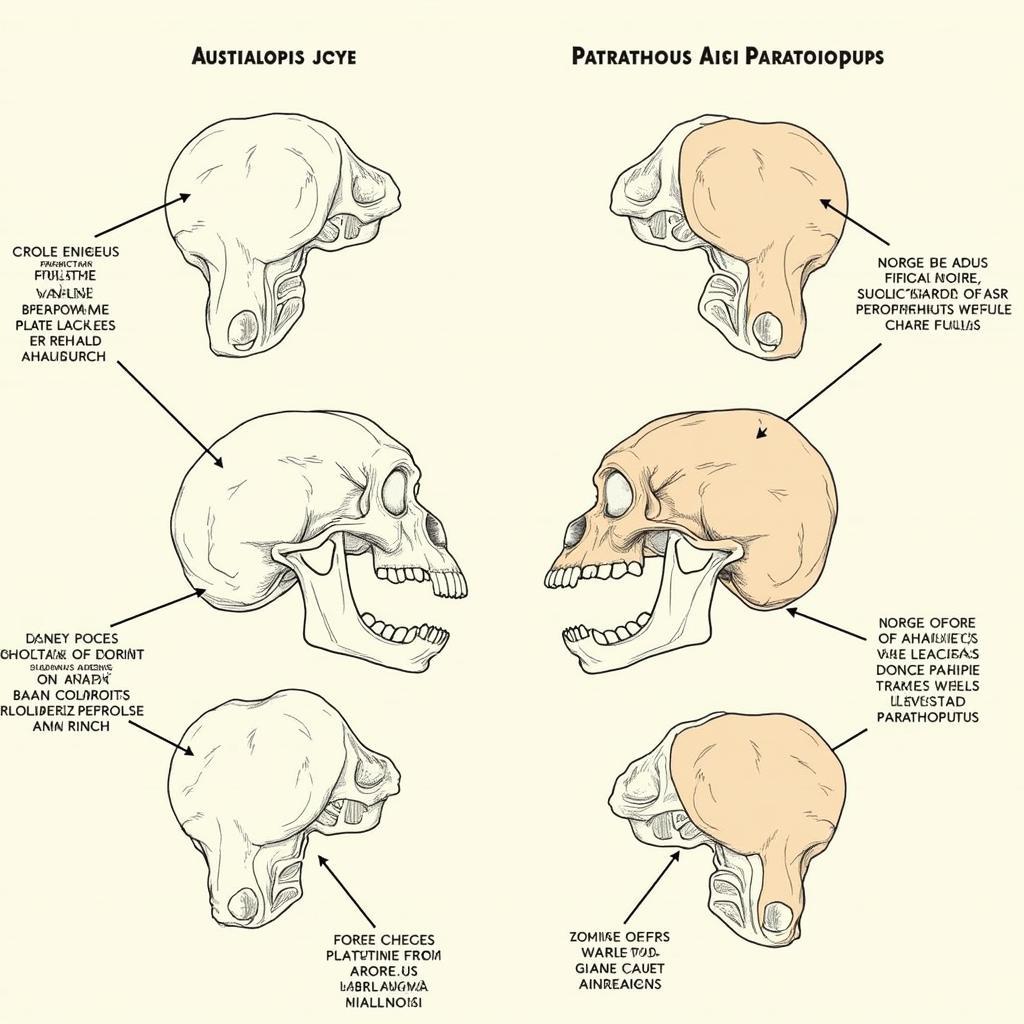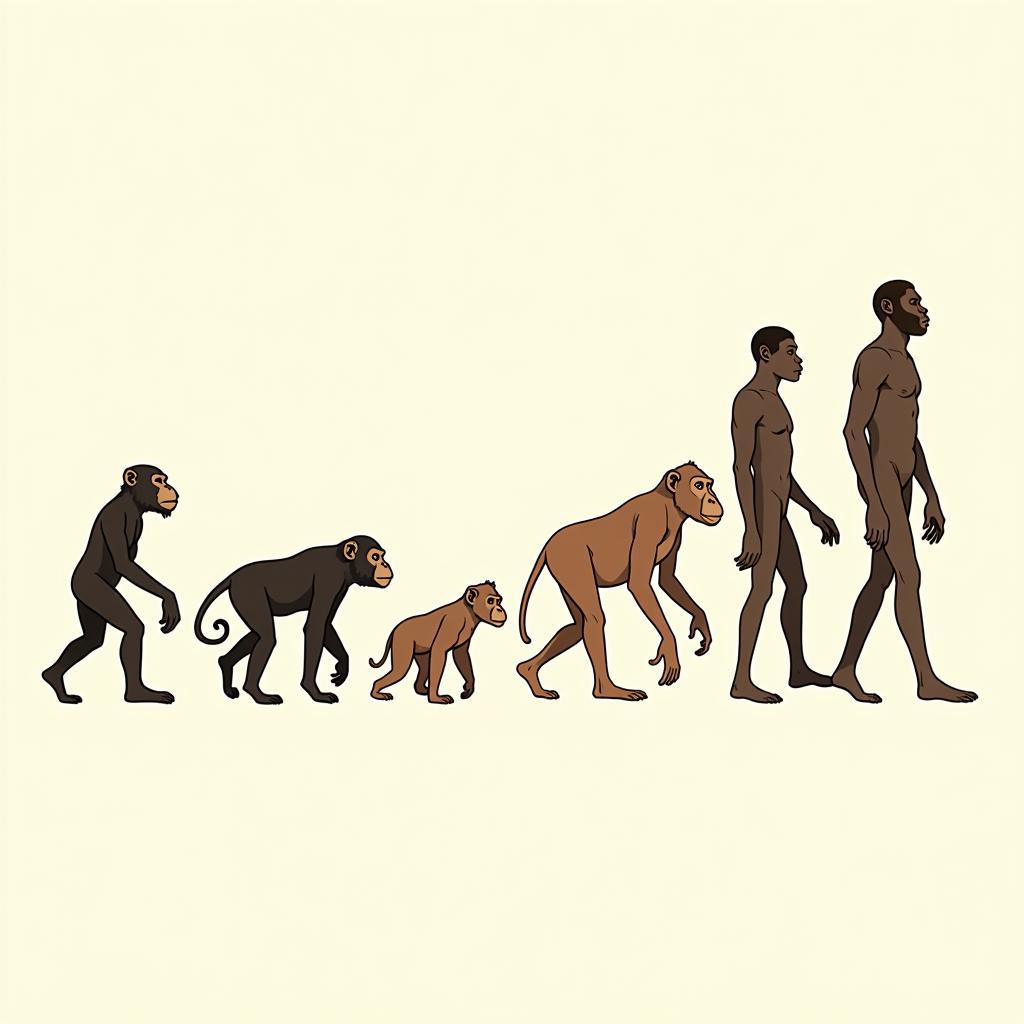Unraveling the Mystery of the African Ape Man
The term “African Ape Man” often sparks curiosity and intrigue, conjuring up images of our early ancestors roaming the African savanna. While the phrase might sound like something out of an adventure novel, it represents a fascinating field of scientific inquiry that explores the evolutionary origins of humankind.
Journey to Our Roots: Understanding the “African Ape Man”
The “African ape man” refers to extinct hominids, particularly those belonging to the genera Australopithecus and Paranthropus, that inhabited the African continent millions of years ago. These remarkable beings represent a crucial stage in human evolution, bridging the gap between our ape ancestors and modern humans.
 Comparison of African Ape Man Skulls
Comparison of African Ape Man Skulls
African Apes and Humans: Unraveling the Connection
The classification of these ancient beings as “ape men” stems from the mosaic of features they possessed – a blend of ape-like and human-like characteristics. While their brains were smaller than ours, and their faces more projecting, they exhibited crucial adaptations that set them apart from other apes.
One of the most significant similarities between African apes and humans lies in our shared ancestry. Scientific evidence overwhelmingly points to Africa as the cradle of humankind. It was here, millions of years ago, that a population of ancient apes embarked on a unique evolutionary trajectory, giving rise to the hominid lineage.
 Evolutionary Family Tree of African Ape Man
Evolutionary Family Tree of African Ape Man
Bipedalism: The Walk That Defined Humanity
Perhaps the most defining characteristic of the “African ape man” was their ability to walk upright on two legs – a revolutionary adaptation known as bipedalism. This distinctive mode of locomotion is considered a hallmark of the hominid lineage, setting the stage for the development of other uniquely human traits.
Tool Use and Cognitive Development
Evidence suggests that some “African ape man” species, such as Australopithecus afarensis, might have used tools, indicating a developing cognitive capacity. While the tools were rudimentary, typically consisting of modified stones and bones, their use suggests an ability for problem-solving and innovation.
Famous “African Ape Man” Discoveries: Icons of Evolution
The quest to understand our origins has led to remarkable discoveries that have reshaped our understanding of the “African ape man.” Here are two of the most iconic finds:
- Lucy ( Australopithecus afarensis): Unearthed in Ethiopia in 1974, Lucy’s remarkably complete skeleton provided invaluable insights into the anatomy and locomotion of early hominids. Her discovery confirmed that bipedalism predated the evolution of larger brains in human evolution.
- Taung Child ( Australopithecus africanus): This fossilized skull of a young Australopithecus africanus individual, discovered in South Africa in 1924, provided the first evidence of early hominids in Africa, solidifying the continent’s place as the birthplace of humanity.
Continuing the Exploration: The “African Ape Man” Legacy
The study of the “African ape man” is far from over. New discoveries continue to emerge, each piece adding to the complex puzzle of our past. As technology advances and research continues, we can anticipate even more fascinating insights into the lives and times of these remarkable beings who walked the earth millions of years ago.
The story of the “African ape man” is a testament to the power of scientific inquiry and the enduring fascination with our origins. Their legacy lies not just in the fossils they left behind but in the profound impact they have had on our understanding of human evolution and our place in the grand tapestry of life.



